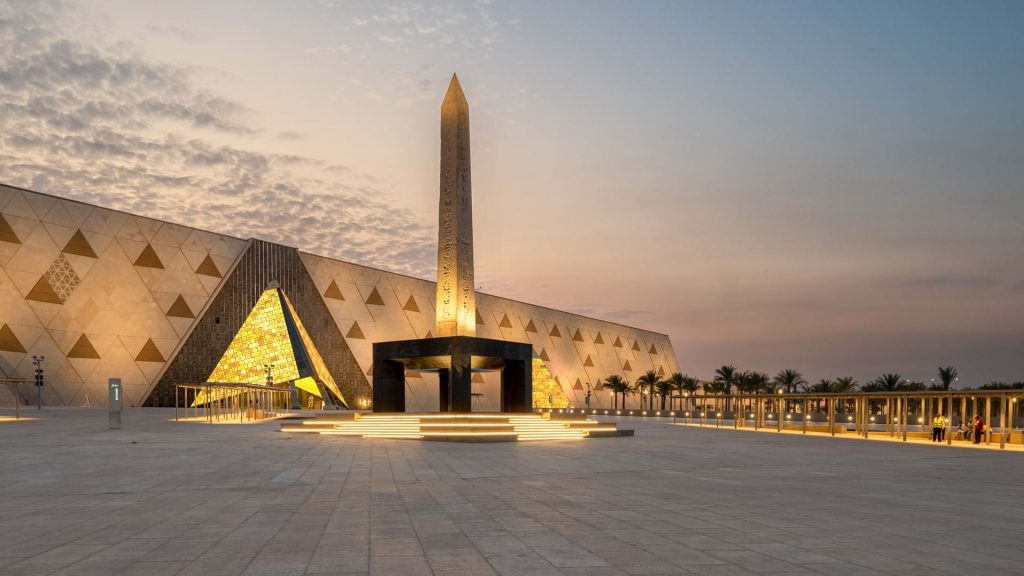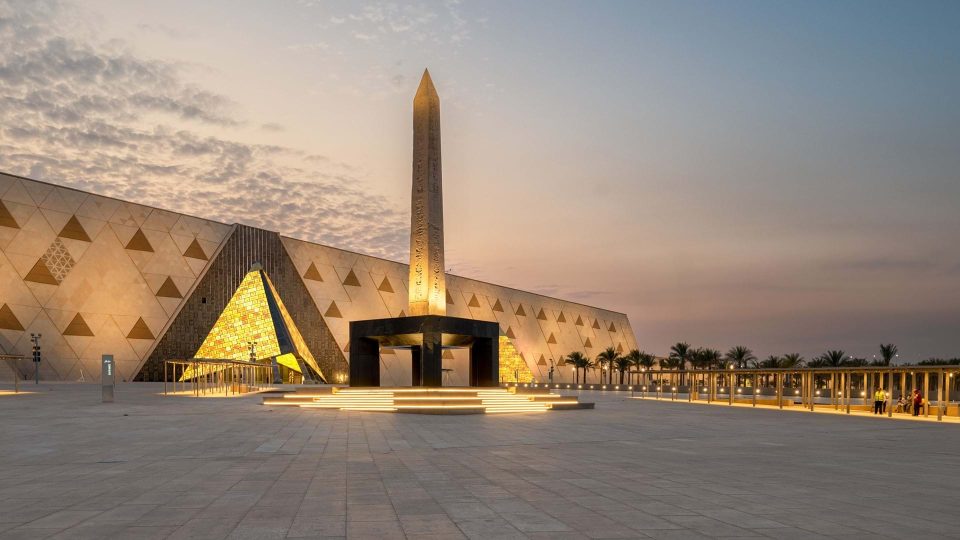Egypt formally opened the Grand Egyptian Museum (GEM) in Giza on 4 November, with an international event attended by 79 delegations and 39 heads of state and government. The ceremony, led by President Abdel Fattah El-Sisi and First Lady Entissar El-Sisi, marks the completion of one of the most significant cultural projects in the Middle East and the largest archaeological museum in the world dedicated to a single civilization.
Located near the Giza Pyramids, the $1.2 billion complex houses over 100,000 artefacts covering more than 7,000 years of Egyptian history. Its central attraction is the complete collection of items from King Tutankhamun’s tomb, displayed in full for the first time since the site was discovered by Howard Carter in 1922.
Challenges and completion
The GEM project began in 2005 after years of planning that started in 1992. Construction faced multiple delays due to the 2011 revolution, economic instability, and the COVID-19 pandemic. Despite these setbacks, the museum was partially opened to local visitors in stages before the full international debut in November 2025.
A new standard for Egyptian heritage
The Grand Egyptian Museum replaces the older Egyptian Museum in downtown Cairo as the country’s flagship cultural institution. Designed with modern display techniques, climate-controlled galleries, and extensive conservation facilities, it allows for the full presentation of Egypt’s archaeological history.
The completed museum spans 500,000 sqm and uses a triangular alabaster facade inspired by the geometry of nearby pyramids. Its design includes a central staircase lined with statues of ancient kings and a glass wall providing a direct view of the Giza Plateau.
The full Tutankhamun Collection
The Tutankhamun collection, which includes the pharaoh’s gold mask, chariots, jewellery, and funerary furniture, had previously been split between multiple sites but is now forms a complete collection to see everything in full for the first time.
The museum also features major works such as the 11m statue of Ramses II, relocated from central Cairo in 2006, and the 4,500-year-old solar boat of Pharaoh Khufu, one of the oldest surviving wooden vessels from antiquity.

Tourism and economic impact
The Egyptian government expects the museum to attract up to 8 million visitors annually, generating a substantial boost for tourism and related industries. Tourism contributes around 10% of Egypt’s GDP, and the government hopes the GEM will help boost visitor numbers further.
The Ministry of Tourism and Antiquities has positioned the museum as central to its strategy for sustainable tourism and cultural investment. Officials describe it as a long-term anchor project to diversify Egypt’s economy, expand employment, and enhance the country’s global image.
Local guides and tour operators report increased demand even before the full opening. “We hope the Grand Egyptian Museum will usher in a new golden age of Egyptology and cultural tourism,” said Ahmed Seddik, a Cairo-based Egyptologist. “I’ve been organising so many tours to the museum even though it was partially open,” he continued.
A regional and global hub
Beyond exhibitions, the GEM is intended to function as a research and education centre, with restoration workshops, archives, and digital documentation units. It aims to collaborate with other regional museums and institutions on training, conservation, and fieldwork.
Experts believe the museum’s opening will have broader implications for regional tourism, potentially encouraging similar large-scale heritage investments in countries such as Saudi Arabia, Jordan, and Iraq, which are expanding their cultural tourism sectors.
Ultimately, the opening of the Grand Egyptian Museum marks a pivotal development for Egypt’s cultural and economic strategy. Egypt’s model shows that heritage can be an economic driver and a tool of soft power and raises the bar for the entire region.



